Idea by
Pablo Goldin
Pablo Goldin
Call for ideas 2021
Hybrid Telecomm
Hybrid Telecomm

- New alliances
Digital connectivity performs as a mandatory requirement for productive and social activities. As a consequence, access to telecommunication services has become a key factor in the definition of architecture and urbanism paradigms. Characteristics of 5G technology will boost this trend and provide stronger agency despite the location redefining the notions of presence, mobility and land use.
Nevertheless, the high cost of 5G infrastructure can increase the digital divide marginating peripheries and rural areas, conditioning the access to the society with the access to connectivity. The project “Hybrid Telecomm” proposes to create a cooperative mobile network operator in which different typologies of buildings and land uses combined with telecommunication infrastructure perform as nodes in a 5G peer to peer network that enable users to perform 5G use cases and share goods and services as a strategy to combine the planning and development of the network and the one from the territory.
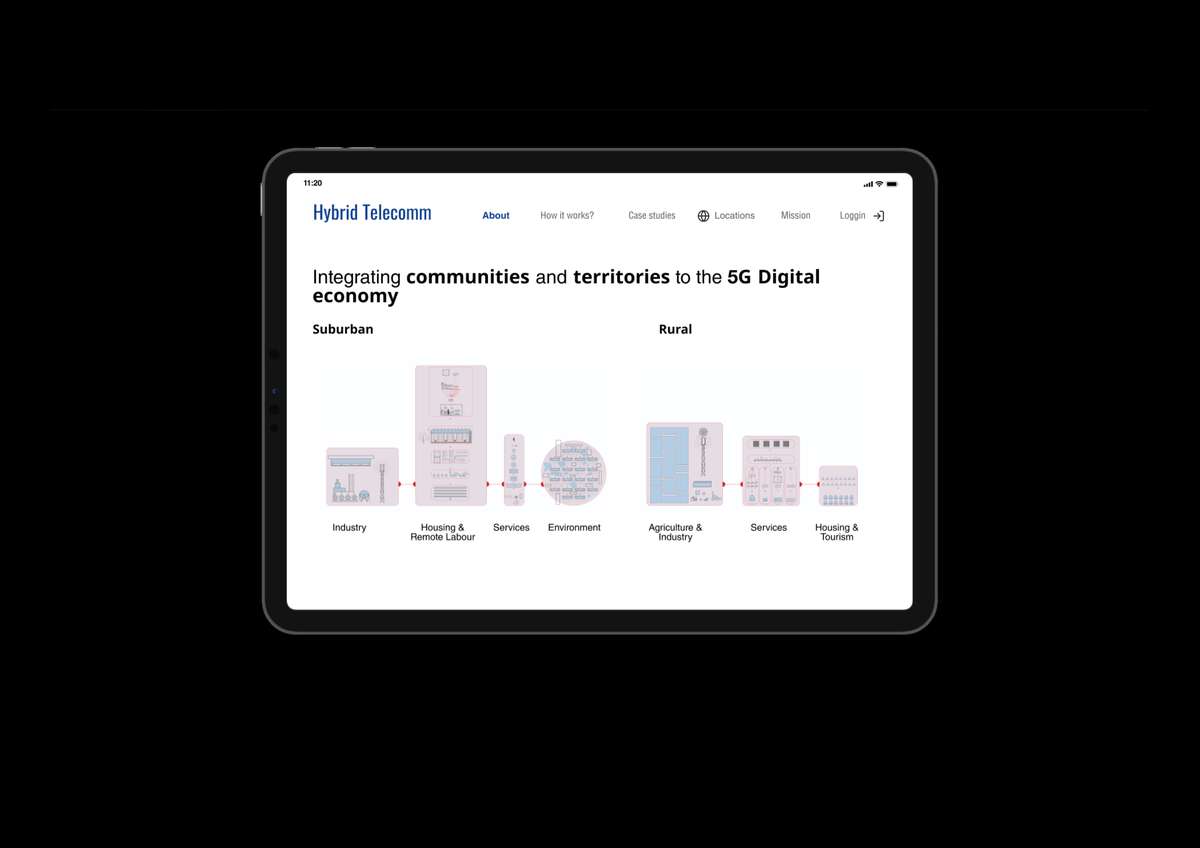
Communities of objects and persons can cooperate to finance the 5G network infrastructure and share goods and services mediated by blockchain technology.
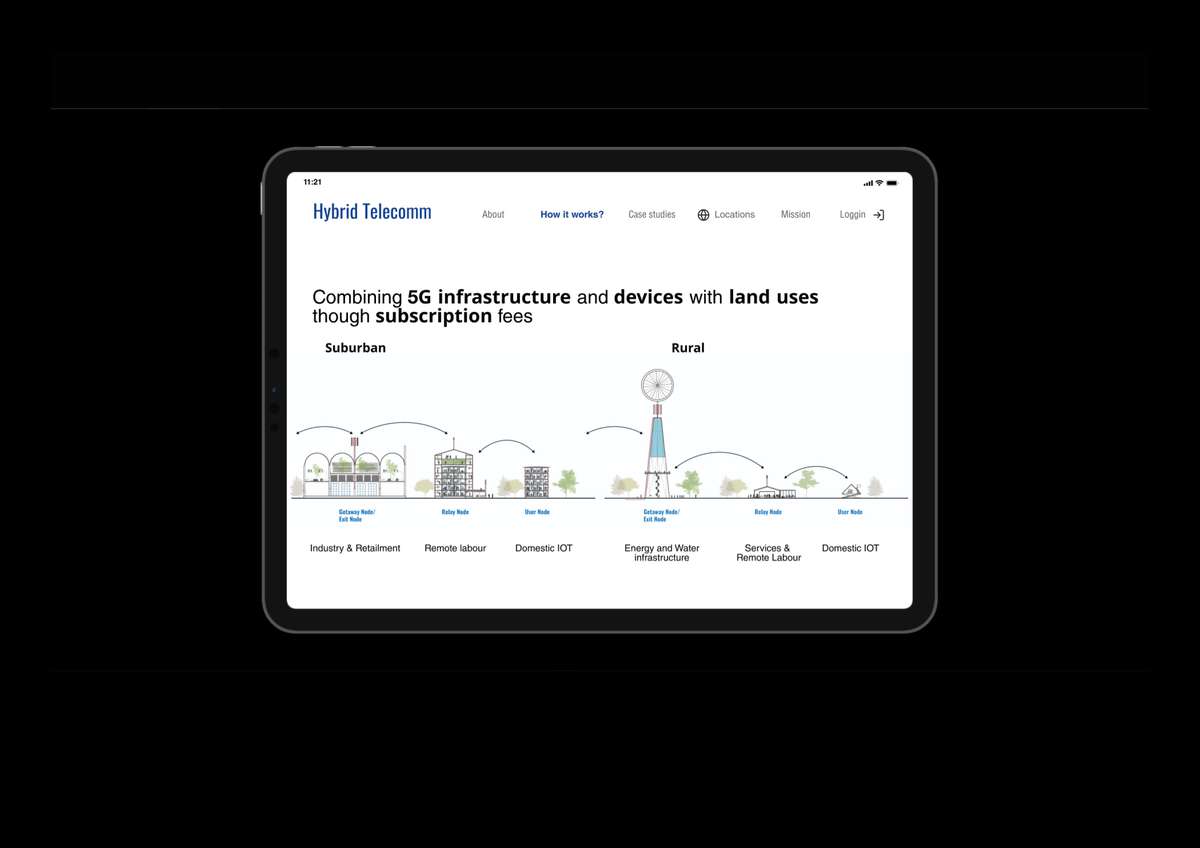
Building predominant typologies from suburban and rural areas in Russia integrate telecommunications infrastructures to become nodes on the network performing urban and digital activities.
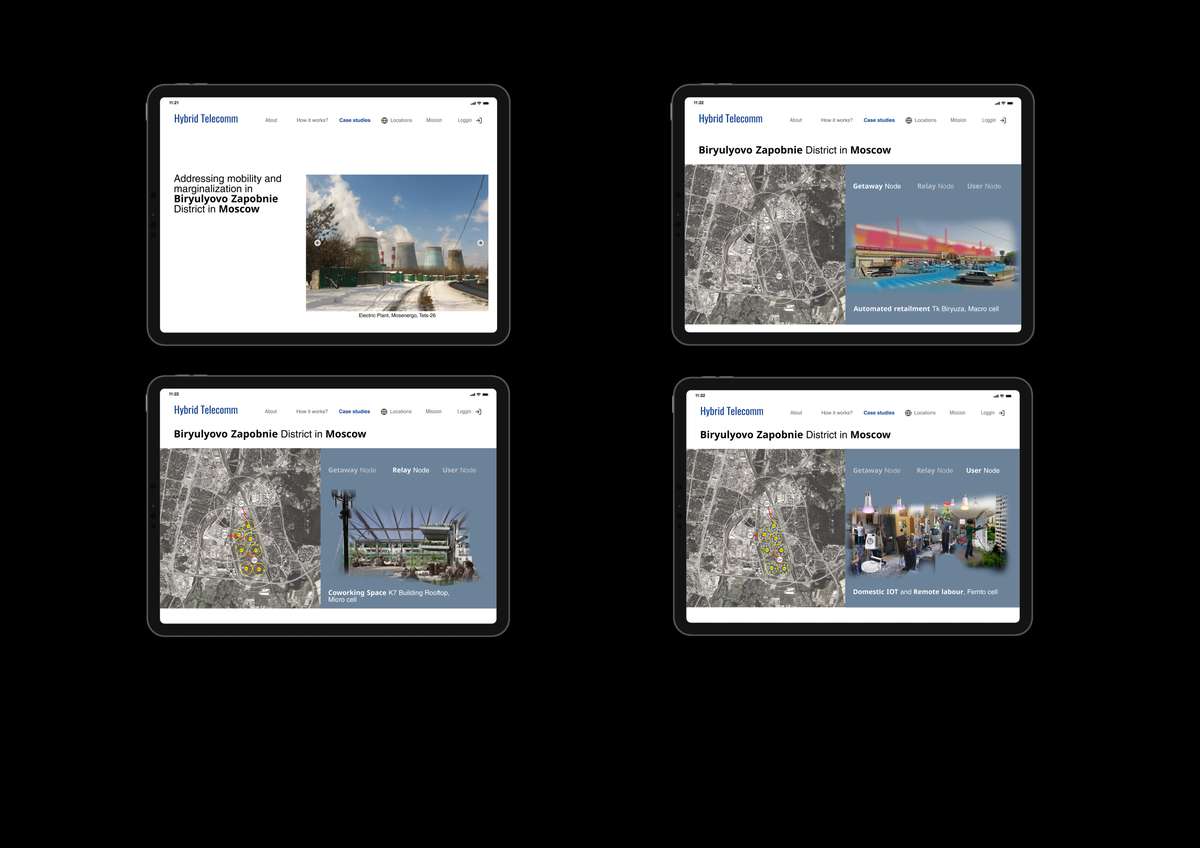
Suburban case study is proposed in the Biryulyovo Zapobnie District in Moscow. The area has strong connectivity problems and a large industrial zone.
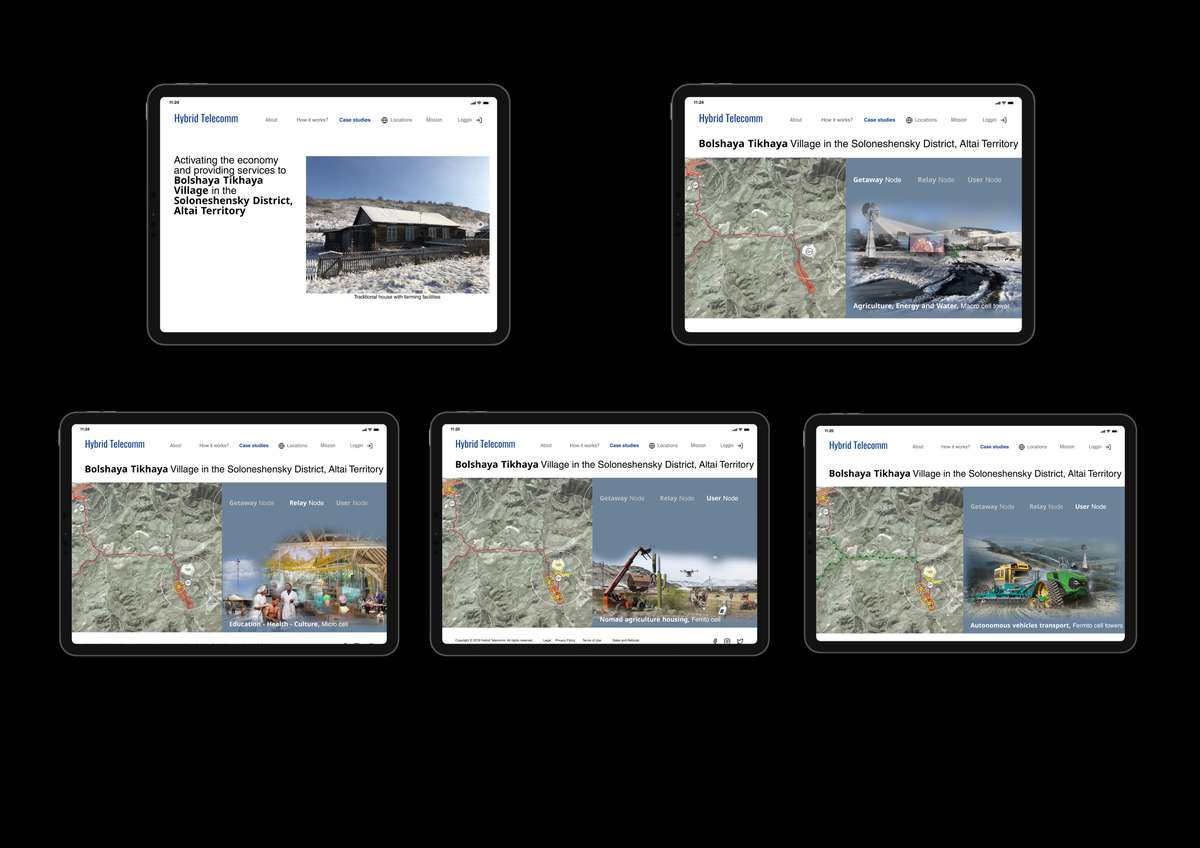
Rural case study is located in the Bolshaya Tikhaya Village in the Soleshensky District in the Altai Territory. The Village located in a region with strong agricultural and farming activities and attractive landscapes, has no services and no school teacher.
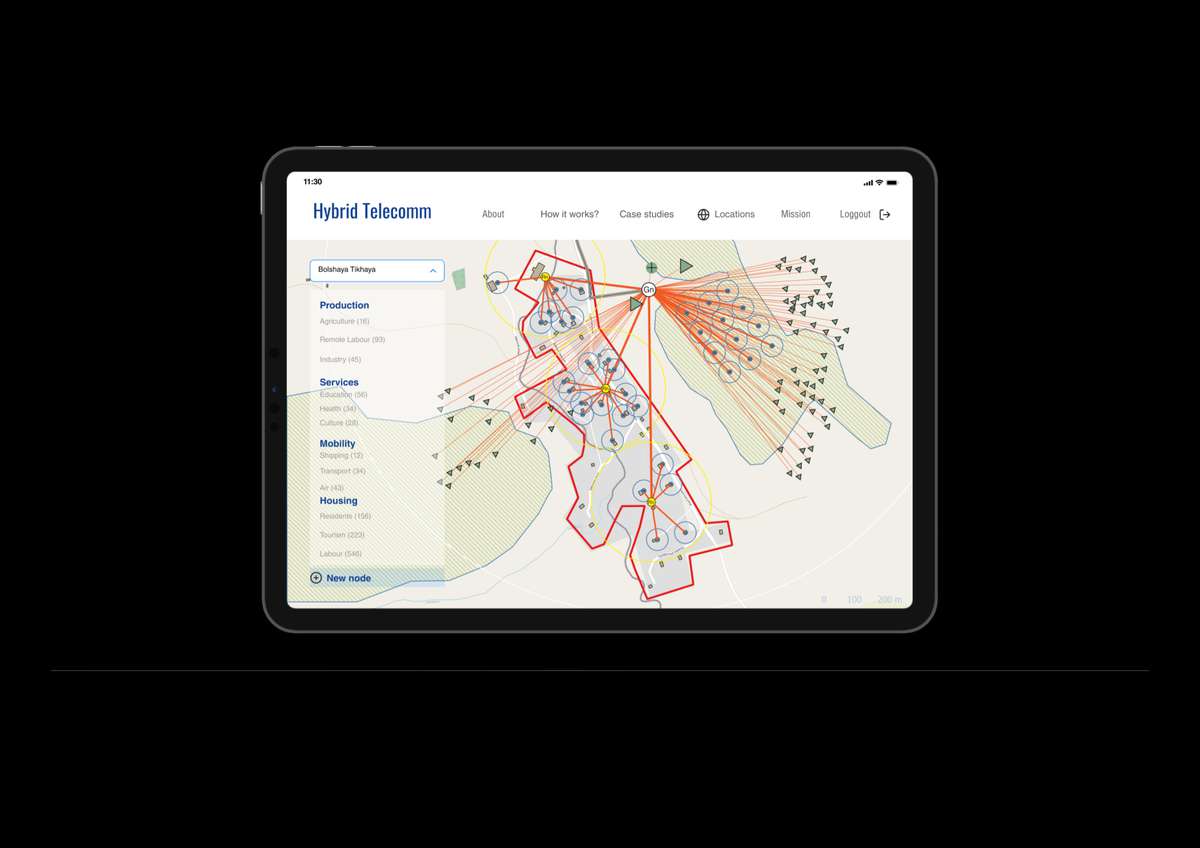
As the network expands, the community becomes more capable to perform and mediate socio economic activities in a local and global scale reinventing through digital connectivity new hybrid paradigms of production and inhabitance.
Hybrid Telecomm
Hybrid Telecomm

- New alliances
Digital connectivity performs as a mandatory requirement for productive and social activities. As a consequence, access to telecommunication services has become a key factor in the definition of architecture and urbanism paradigms. Characteristics of 5G technology will boost this trend and provide stronger agency despite the location redefining the notions of presence, mobility and land use.
Nevertheless, the high cost of 5G infrastructure can increase the digital divide marginating peripheries and rural areas, conditioning the access to the society with the access to connectivity. The project “Hybrid Telecomm” proposes to create a cooperative mobile network operator in which different typologies of buildings and land uses combined with telecommunication infrastructure perform as nodes in a 5G peer to peer network that enable users to perform 5G use cases and share goods and services as a strategy to combine the planning and development of the network and the one from the territory.
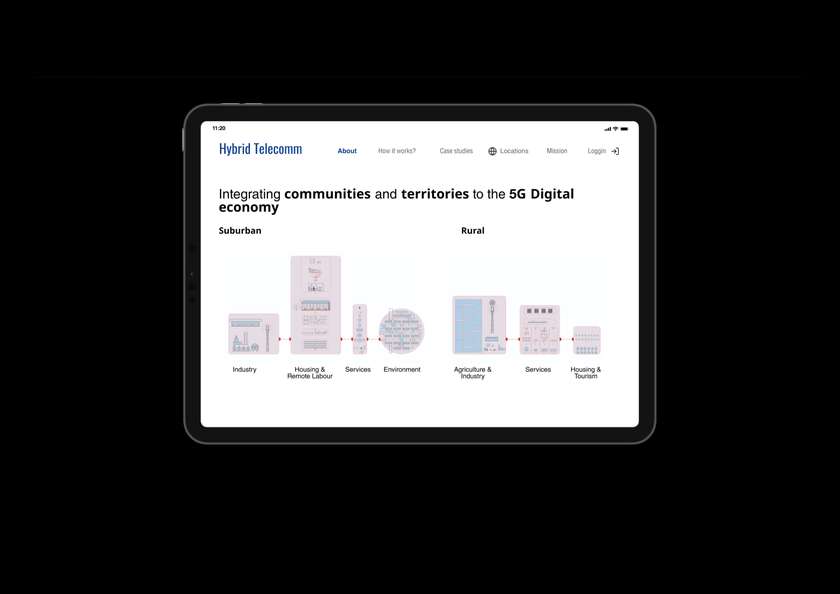
Communities of objects and persons can cooperate to finance the 5G network infrastructure and share goods and services mediated by blockchain technology.
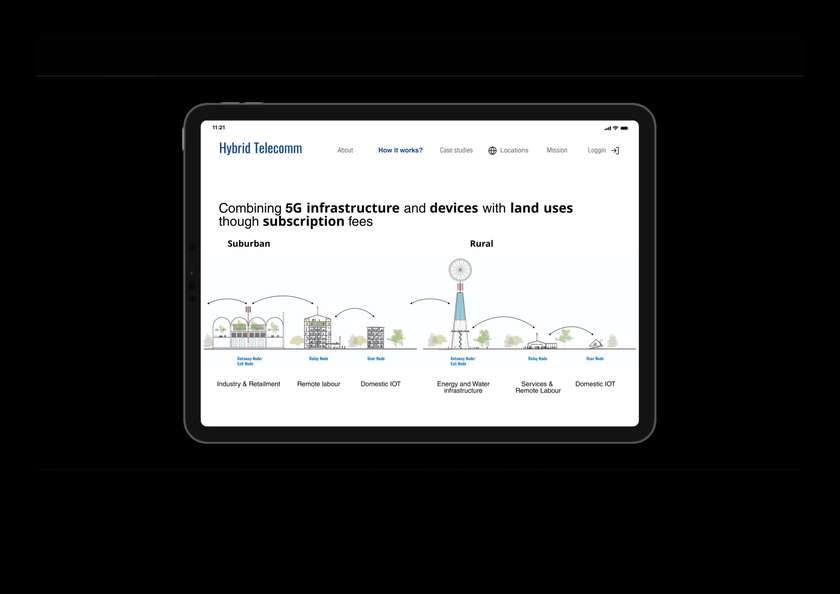
Building predominant typologies from suburban and rural areas in Russia integrate telecommunications infrastructures to become nodes on the network performing urban and digital activities.

Suburban case study is proposed in the Biryulyovo Zapobnie District in Moscow. The area has strong connectivity problems and a large industrial zone.
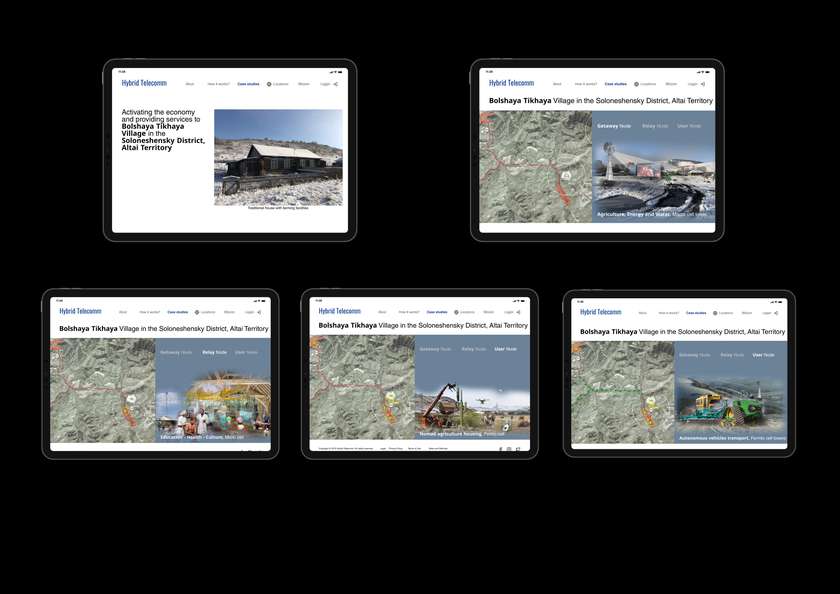
Rural case study is located in the Bolshaya Tikhaya Village in the Soleshensky District in the Altai Territory. The Village located in a region with strong agricultural and farming activities and attractive landscapes, has no services and no school teacher.
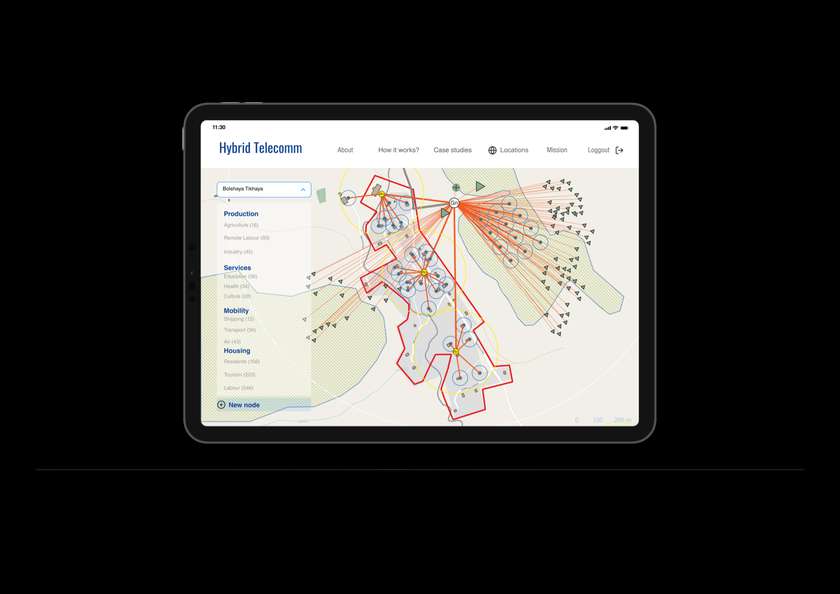
As the network expands, the community becomes more capable to perform and mediate socio economic activities in a local and global scale reinventing through digital connectivity new hybrid paradigms of production and inhabitance.